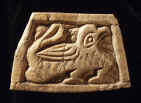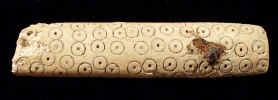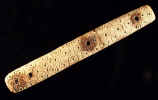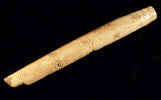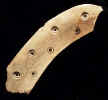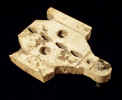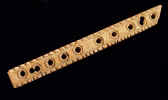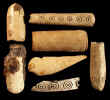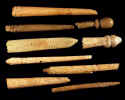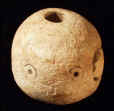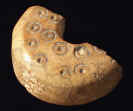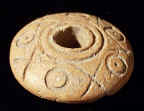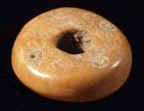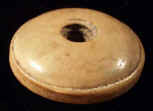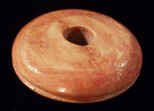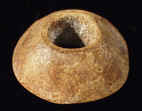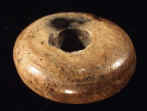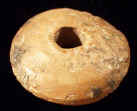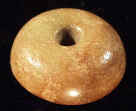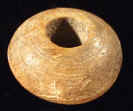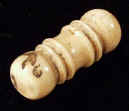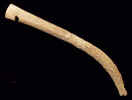1088
BYZANTINE BONE PLAQUE
IX-X century A.D.
Trapezoid plaque was used as an inlay for a box. Carved in relief depicting a stylized bird in right profile. Mended from two pieces.
L. 1.6" (4.1 cm), H. 1.1" (2.8cm).
For close example, see: Davidson G.R. Corinth, vol XII, The Minor Objects. Princeton, 1952, p.135, #948; Goldschmidt and Weitzmann. Byzantinische Elfenbeinskulpturen des X.-XIII. Jahrhunders, I, no.109, pl. LXIV.
$ 475
1089
BYZANTINE STEATITE PLAQUE
X-XI century A.D.
Rectangular fragmentary plaque. Carved with palmettes enclosed in double concentric circles which are interspaced with leaves against a background of cross-hatched lines. This pattern was the most commonly used on caskets of the Byzantine period.
L. 2.4" (6 cm), H. 1.2" (3.1cm).
For close example, see: Davidson G.R. Corinth, vol XII, The Minor Objects. Princeton, 1952, p.135, #949; Goldschmidt and Weitzmann. Byzantinische Elfenbeinskulpturen des X.-XIII. Jahrhunders, I, pls. III ff; Longhurst. Carving in Ivory, Victoria and Albert Museum, I, pp. 35-37, pls. XII-XIV.
$ 350
Byzantine period buttons of ivory, bone or steatite exhibit a variety of decoration and were turned on the lathe. A study of the shapes has revealed no development within the three centuries (X-XII). Some of the bone buttons were dyed red or pink shades. For buttons see: Davidson G.R. Corinth, vol XII, The Minor Objects. Princeton, 1952, p.297-304;

